Shin Megami Tensei IV
It has been a long time since ATLUS’ previous numbered Shin Megami Tensei title, nine years in fact, since the release of Shin Megami Tensei III: Nocturne. Has the wait been worth it and is this title a strong return after such a long absence? I think so.
Those of you who have played the Trauma Center and/or Etrian Odyssey games will be familiar with ATLUS’ relentless difficulty level with their games, in fact, the Shin Megami Tensei games can be considered the most difficult of all ATLUS franchises, you will see me making many comparisons between this game and one of my favourite JRPG series, Persona.
In the weird and wonderful world of SMT IV, the game takes place in the Eastern Kingdom of Mikado, where Samurai are given the task of defending the kingdom from demons. Players take control of one of the newest Samurai recruits and must battle through hordes of demons, complete requests, explore dungeons and ultimately figure out where their loyalties lie.
Saying too much about the story will traverse into spoiler territory, but I will say that not far into the game there will no doubt be many surprises that will hit you, raising many mysteries and questions. Throughout the game, you will be given many options and answers to questions, and depending on which choice you make, will lean towards the Law, Chaos or Neutral route ; your eventual ending will depend on which route you take.
Let me give you a warning; this game is not for the faint of heart. The combat can be extremely challenging, ludicrously so, unfairly so at times, the starting enemies can take off 75% HP off your character with a basic attack, it is not a pleasant experience and can be an incredibly stressful one to newcomers and experienced players alike, but such is the world of Shin Megami Tensei. Very much like Persona, the key to winning each and every battle is learning each and every enemy’s strengths and weaknesses; hitting an enemy with an elemental weakness will give you an upper hand and can be the difference between life and death. If you’re going into this game expecting a JRPG for beginners, you should probably look elsewhere, this game is brutal.
One of the key gameplay aspects of SMT IV is recruiting demons to fight on your side. At any point in battle during the main character’s turn, you have the option to “talk” with an enemy and negotiate with them in an attempt to get them to fight for you ; think Pokémon, but instead of throwing balls, you’re talking to them. This game is the Pokémon before Pokémon existed, pretty much, or a more mature Pokémon, if you will.
Negotiating with demons is very hit and miss, first of all, you can only get a demon to join your side if they’re equal or lower level than the main character. Second, each demon has a set personality and the answers you reply to their questions depend heavily on that personality ; some demons will ask for item, Macca (the currency in this game), your HP, your MP or even the life of your fellow demons before they become satisfied, although sometimes they will just straight up leave the battle after receiving a bunch of free gifts, which is nothing short of infuriating. Another annoyance is the inconsistency for answering demons’ questions, for example, just because one answer to a question worked the first time doesn’t mean it will work again a second time, a lot of these are chance-based, and you really just have to cross your fingers and pray that your negotiating comes out successful. My tip for early players is to simply save after every demon recruiting and keep trying, failing to negotiating a demon is not the end of the world, and you can simply try again after the enemy’s turn is over. However, once you recruit a demon it is one of the most satisfying experiences in the game.
Each and every demon has their own elemental strengths, weaknesses and skillset, learning each and every one of these things, balancing them and knowing when to switch them out to suit every area/battle is one of the most important things to success. Once a demon has learned every skill from it could, it can pass on any of its skills to the main character, who starts out as a blank slate with no skills, so choosing the right demons and the right skills and using them to create a hero with the perfect skillset is also very satisfying.
When exploring dungeons, you control the character in a third-person, 3D environment. Every now and then an orange ring will appear around your character, indicating a nearby location of interest, which can range from treasure chests, gather points for relics (which can be sold for Macca, or even higher/lower locations that you can access by pointing your camera up or down with the d-pad). Enemies will appear on the field as neon blue or pink sets of blocks and will charge you as you come close. Pressing the X button will make your character swing his weapon and, if you hit an enemy before they can come into contact with you, you will start the battle dealing a small amount of damage to them and avoid getting ambushed.
In battle you control a party of a maximum of four; the main character, and up to three demons. Sometimes you will have a guest character with you who is completely AI controlled. At any point during the main character’s turn, you can swap out any demons in your party for those in your stock, or swap in demons to an empty space. Demons can also swap themselves out when it is their turn, as well. Taking advantage of the enemy and hitting their weaknesses will grant you bonus turns, whereas mistakes such as missing the enemy, or using an elemental attack they repel, absorb or nullify will take away your turns. Same goes the enemy. This is quite honestly a brutal system, especially when you first face an enemy you have never fought before and their elemental affinity is unknown to you ; you have to do a lot of guesswork. However, once an enemy is defeated you can view their stats with the simple press of the Y button, a helpful little feature which also shows you what your attacks will do to each enemy when you’re targeting them with the cursor. Another feature implemented into this battle system is the “smirk” feature ; every now and then, when you land an effective attack, you will “smirk”, giving you a massive temporary increase to all stats and prevent your weaknesses from being exploited while the smirk status is happening. This system can turn the tide of battle, giving you a bigger excuse to exploit the enemy’s weakness and to finish every battle quickly. Should your main character fall in battle you will no longer be able to swap in and out demons. However ; should any of your demons have a revive spell or a skill that allows them to use recovery items, you can simply just revive the main character… Otherwise just pray and hope everything works out!
One of my main complaint about this game is how luck-dependent surviving each battle can become. Just an enemy getting a lucky critical or you getting an unlucky miss can turn the tide of battle and quickly become a mess, which is why I think the battle system is very, very hit and miss and can, one moment, feel incredibly satisfying, and the next, incredibly frustrating. It’s a very… strange experience, I can tell you.
Oddly enough, winning battles does not reward you with Macca, which for a very long time during the game, was a big pet peeve of mine. However, through selling relics and items which you receive through exploration and through completing challenge quests from the tavern, you will be rewarded with a reasonable amount of Macca. Not that you will be spending that on items, mind you, the game does not hold back on throwing items at you battle after battle. Many times you will find yourself so full on an item (each item has their own cap) that you will have to sell excess items. This allows you to save your Macca for new armour and fusing demons.
Those who have played previous Persona games will have no trouble understanding the demon fusion system. If you’re new to the series, this is the system for crafting new demons. By accessing the menu you will be able to fuse existing demons together, creating a new demon with the skills of your component demons. However if you yearn to reclaim your ingredient demons you can get them back through the demon compendium, for a price. For all you completionists out there you will be glad to hear that with over 400 demons to collect and keep you busy for a long time.
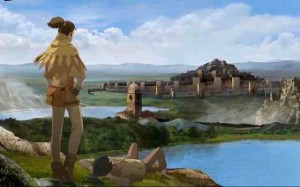
New Game+ extends Shin Megami Tensei’s longevity, and is a useful tool for those wishing to view all endings…
Finally let’s talk about the app store, every time you level up you receive 10 points to spend on upgrading your character. The enhancements you buy cover a diverse range, from the direct such as increasing skill slots for you and your demon, to more indirect upgrades like the lowering of demon’s demands of negotiations. If you’re seeking a challenge you can opt out of these upgrades, but if you need help I would recommend getting MP regeneration and party MP regeration.
Shin Megami Tensei IV is a stunning JRPG, but it is not without it’s faults. At times losing can be frustrating, but through reflection you can learn from your deaths and improve your play. The difficulty to begin with is unforgiving, and you will have to grow as a player to advance. Was there a way I could fight differently? Was my combination of demons and skills correct? Did I have a weakness that the enemy exploited?
Although the game starts hard, the time invested in your party and the knowledge gained along the journey makes the game much more manageable. With end game in sight you should be advanced enough to deal with the majority of battles, but one mistake from you can turn the battle against you very quickly.
The game is full of features to make your life easier as a player, from accepting quests straight from the in-game menu to the terminals used for fast travelling around Shin Megami Tensei IV’s world. Initially the world map can be confusing, but you will learn to navigate it as you progress through the game. Visually, the game is beautiful with gorgeous character design, including the demons which range from classical design to truly unique. With a fantastic musical score and sound design this is a game where you would be missing out playing without sound.
Overall Shin Megami Tensei IV took me just under 50 hours to complete, and I had missed some sidequests in this time. If you’re a fan of RPGs it is well worth the money, but if you are new to RPGs this is probably not the game to get you started. If you are looking for a starter RPG, check out Mario & Luigi: Dream Team Bros (you can find my review here). Shin Megami Tensei IV is a fantastic journey with a gripping plot, engrossing characters and immersive gameplay, well worth the £40 you’ll spend on it. Then just when you think it’s all over there is a New Game+ mode where you can your party are carried over to fight again, but this time your reward will be a new ending.
9/10
~Cyrus
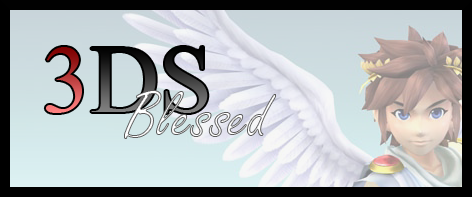
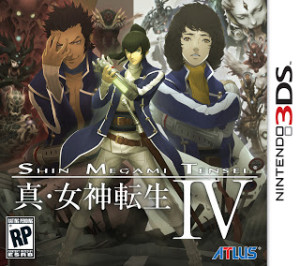
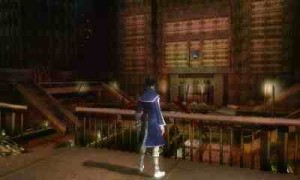
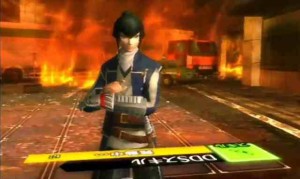
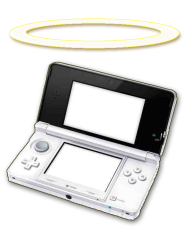


So right about the hardness – but thats what I like about Altus games.
So glad to hear this coming out in Europe, Altus and NIS need to bring more of these games to English shores. Loved the Persona games as well, hope they release some on the 3DS.